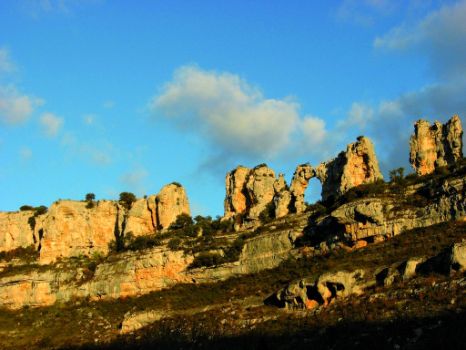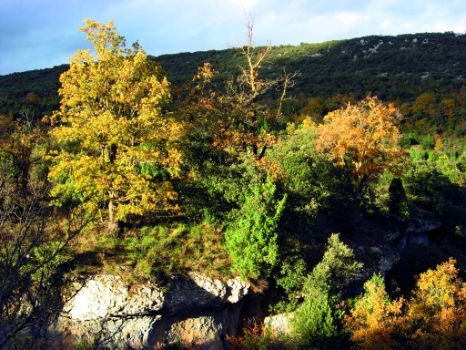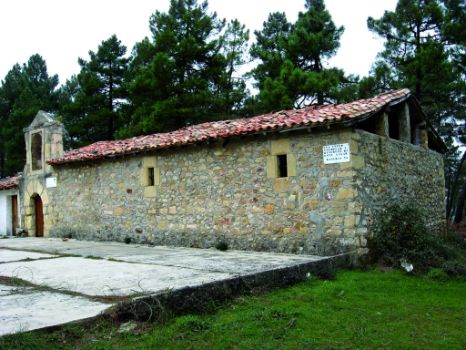Net of Natural
Trails

Stage 9.1: Puente de Valdecastro - Cillaperlata
Description
Valdecastro Bridge (535 m), located one kilometre from Trespaderne, in the final stretch of Horadada Gorge and Section 8, is the place from where the Ebro Nature Trail heads to Cillaperlata, leaving to the left, along the river, the recreation area equipped with tables and a barbecue.

One kilometre from the bridge, the route veers onto a track to the left, then right, turning into an inland path that runs alongside the GR 99 and GR 85 toward Frías.
It first winds through pines and a few gall oaks. After about five minutes, a side-track leads to the shrine of Encinillas, a folk-style building nestled amongst pines, surrounded by tables and a barbecue pit, and ideally located in a beautiful place to spend a nice day in the countryside (0.9 km, 10min). Back on the path, the GR 99 reaches a more open area with less vegetation peppered with farmlands (some still in use and others reforested with pine).
The route comes upon the Ebro (1.8 km, 25min) and continues parallel to its course. Lush riparian vegetation and Hoz Mountain Pass will be present at all times during this Section.

Carpeted by kermes oaks, pines and gall oaks, Peña de la Cruz (641 m) and Peña del Castrillo (584 m) rise to the left and right, respectively, of the gorge. The route reaches the bend where the water of the Cillaperlata Reservoir begins to build up.
After about one hour, the route reaches the road (4.5 km, 1hr 5min) that heads up to the town, and continues along this course for about thirty metres until it turns onto a track to the left, through farmland and near the river and the reservoir. Good views of the town can be had from the riparian forest, especially of the reservoir that supplies water to the Canal Central Quintana.
The route enters Cillaperlata, (540 m, 4.7 km, 1h 10min) near the stone basin, where it links with Section 9 between Trespaderne and Quintana Marín Galíndez.
Sites of interest
Profile

Highlights
Further information
Ebro in the Highlands
Before carving out the great valley, the Ebro rises as a mountain river that frequently races through precipitous gorges. In the wasteland of La Lora, between Valdelomar and Bricias (Cantabria), the river's horizon is formed by the slopes of a steep-faced cliff with karst pools like the Tobazo waterfall.
Further on, in Hoces del Alto Ebro y Rudrón Nature Reserve, these watercourses have cut deep canyons of up to 200 m, where the ochre of the terrain contrasts with the abundant, diverse green vegetation. The elongated Tesla Mountain Range, which separates Medina de Pomar from Valdivieso Valley, is perforated twice by the Ebro: at Hocinos Gorge and Horadada Mountain Pass. This is also the case of Montes Obarenes Nature Reserve, a limestone wall of the Cantabrian Mountains overlooking the lands of Burgos, with deep gorges similar to those carved out by the Ebro in Sobrón.
Finally, in La Rioja, the river has cut an impressive natural channel, Conchas de Haro, that rises to an altitude of 445 m. This channel overlooks Riscos de Bilibio, which gets its name from the Latin word bilibium, meaning two lips. From here, the Ebro abandons the highlands and ventures into the depression in its middle section. Gone are the mountainous areas and uneven geography.





